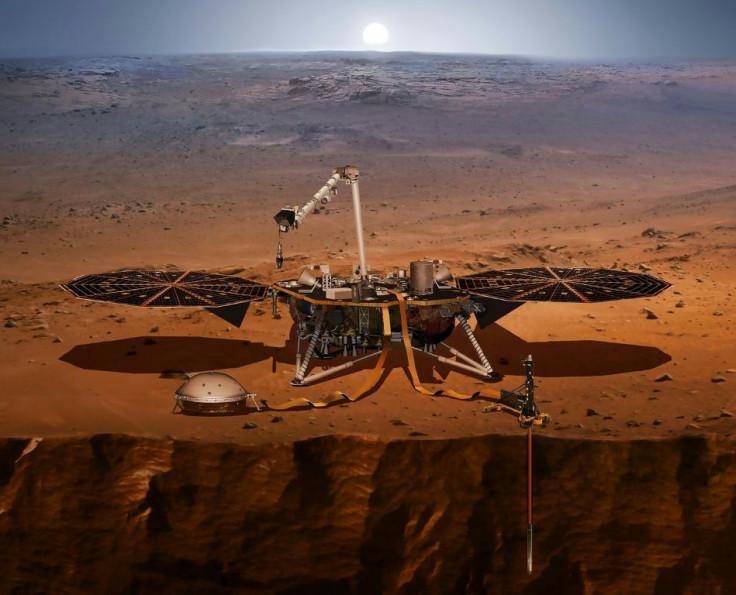NASA Rover Takes 'Haunting' Image Of Planet Mars

The NASA rover Curiosity has been sending some of the most spectacular images of Planet Mars since it was launched by the U.S. space agency from Cape Canaveral in 2011.
Most of the images have given us a glimpse of what an alien environment could really look like, and how a place with such a different atmosphere could take shape. Space enthusiasts have been lucky enough to view beautiful alien vistas that have both enthralled and baffled scientists because it highlighted just how different is the geological makeup of the Red Planet compared to Earth.
One of the most unforgettable photos taken by Curiosity is a picture of a dark grey Martian sand dune taken in December 2015. It was shot at the Namib Dune in the Bagnold Dune Field along the northwestern region of Mount Sharp.
Mars’ atmosphere was able to create sand sculptures that have not been seen on Earth - a combination of small ripples and large ripples that go up to as high as 10 feet in height. The sand dune was sculpted by Martian wind, creating a breathtaking vista of jagged sand formations straight out of a “Blade Runner” movie.
Using its Mars Hand Lens Imager, Curiosity was also able to take a “selfie” in January 2018 by stitching together panoramic images of the Red Planet. The U.S. space agency’s Mars vehicle also took photos of its wheels which also gave us a glimpse of the unique Martian horizon.
Aside from the landscape, the Curiosity rover was able to capture minerals from meteorites that landed on the Red Planet. Back in 2016, it was able to capture an image of a smooth rock which turned out to be an iron-nickel meteorite via its MastCam. It was a very interesting photo because it showed just how thin the atmosphere of Mars is that such a space rock could enter its surroundings.
Recently, the Curiosity rover was also able to take a hauntingly beautiful landscape of Planet Mars. According to a CNET report, the Curiosity's right navigation camera was able to snap a vista found on the Central Butte inside the Gale Crater.
The report described the area as “fascinating” and one that scientists manning the rover are interested to study. Aside from the curious rock formations caused by meteors landing on the Red Planet, you can also see a “weird fog” or cloud bank hovering in the distance. Mt. Sharp can also be seen in the background, completing the alien landscape.
These photos just go to show how different Planet Mars is compared to Earth and could eventually play an important role in determining whether or not the landscape is somewhere that humans can survive in.
© Copyright IBTimes 2025. All rights reserved.





















